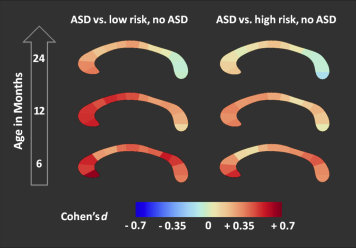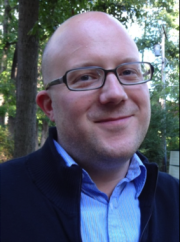By Jason Wolff, PhD
The corpus callosum is by far the largest white matter connection in the brain. We now have a great deal of evidence suggesting that connectivity is disrupted in autism. So when we think about connectivity across brain regions, the corpus callosum is an obvious target. There is a steady trend in the literature — dating back nearly two decades — suggesting that autism is associated with a smaller corpus callosum. It’s an important and fairly consistent finding.
If over a dozen studies have found a smaller corpus callosum in adults and older children with autism, would we see the same in infants? This was our main question. Somewhat surprisingly, we found the reverse of what has been seen later in life — in infants who developed autism, the corpus callosum was significantly larger. This result was evident even when we controlled for total brain size, which is known to be elevated in autism early in life.

Corpus callosum enlargement was most evident at ages 6 and 12 months. The differences between babies with and without autism seems to go away by age 2, which we think is consistent with research showing a smaller corpus callosum in older children with autism relative to controls.
So our first set of results intrigued us. The corpus callosum was larger, and in particular thicker, in babies with autism. What could be causing this? Because the IBIS study collects multiple types of brain imaging, we were able to partially explore this question. We examined diffusion tensor imaging data, specifically a measure called radial diffusivity, to understand how white matter fiber structure might explain differences in corpus callosum size.

We found that radial diffusivity very strongly predicted corpus callosum size in babies. This suggests that axon density and composition may explain group differences. For example, it is possible, that babies with autism have excess thin axons due to less pruning or early overgrowth. We can’t say for sure with these data, but we are very excited to pursue these results and are in the process of doing so through our ongoing Infant Brain Imaging Study.
If you have a child with autism and are expecting another child, please contact www.ibis-network.org. You can participate no matter where you live in the US and you can get a free evaluation and meet with a well-trained clinician.

Jason Wolff, PhD
